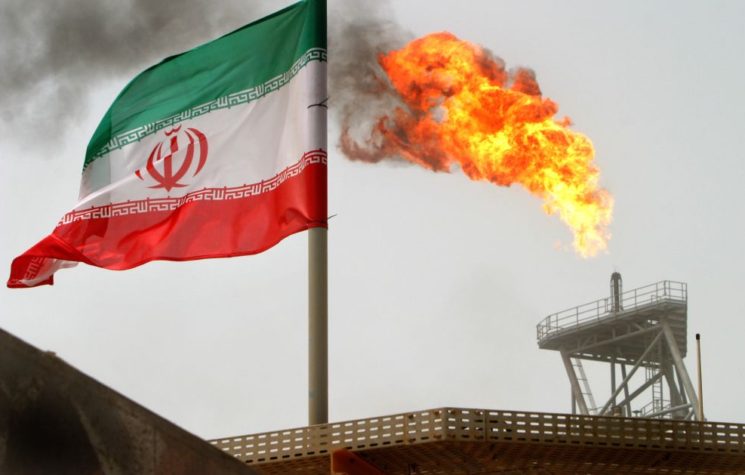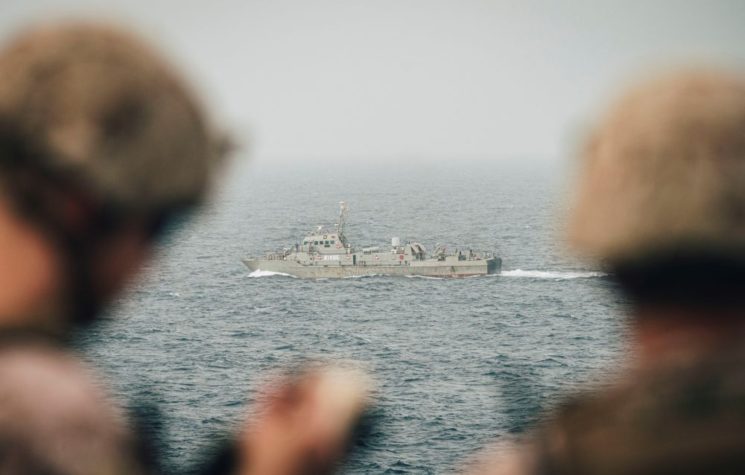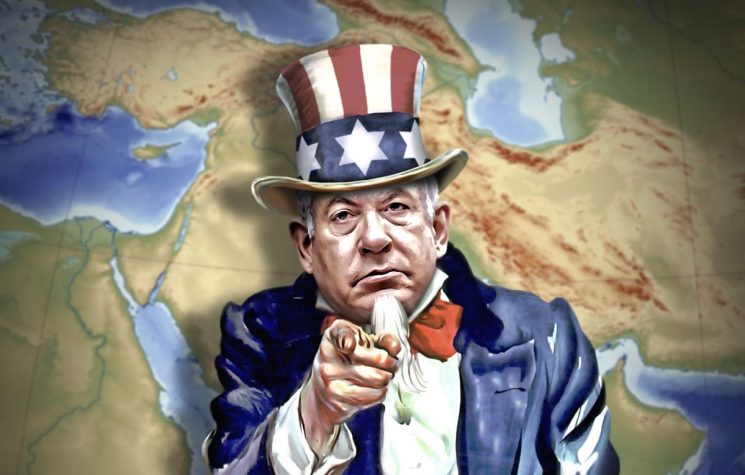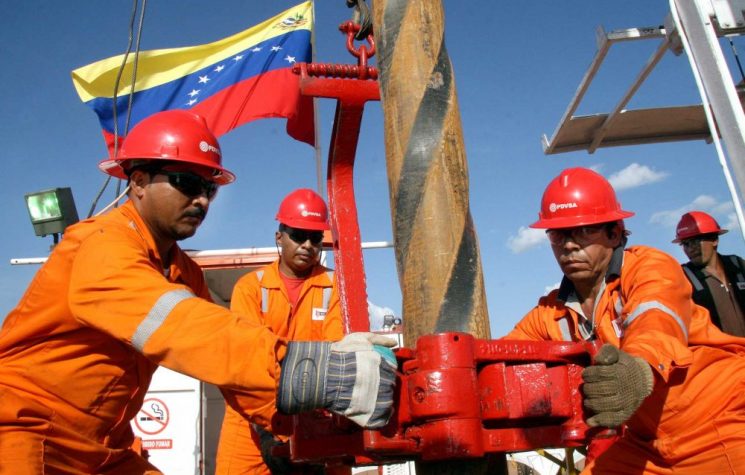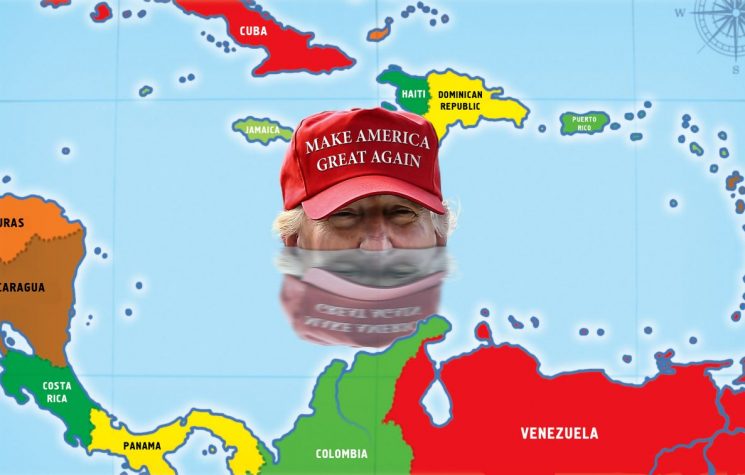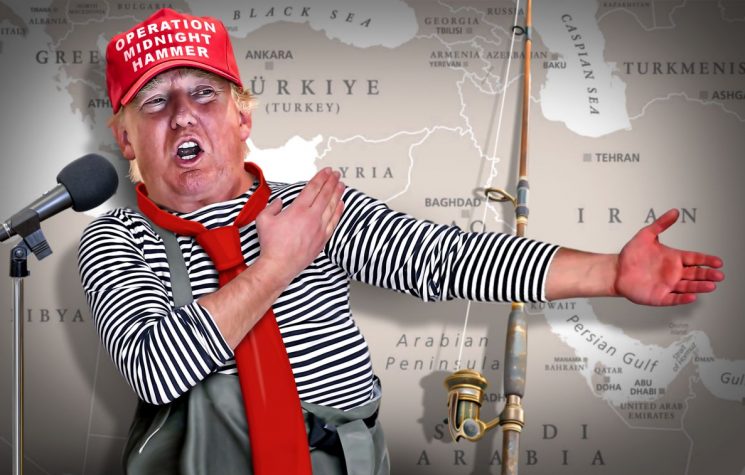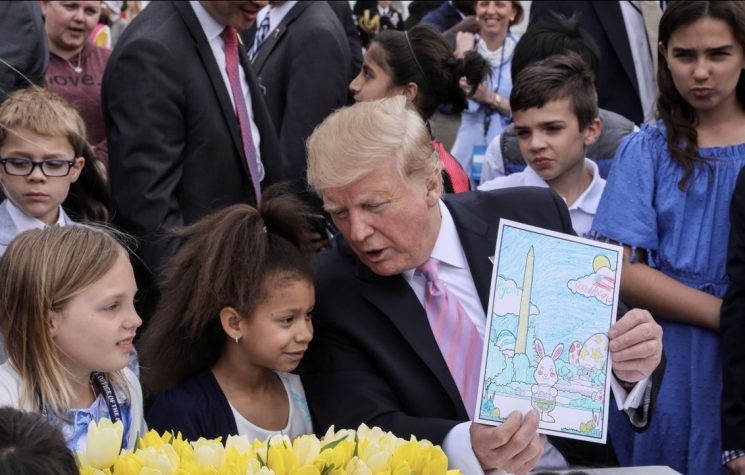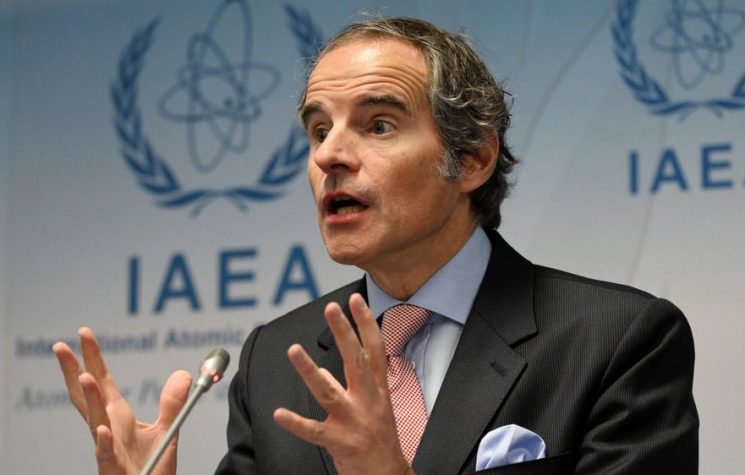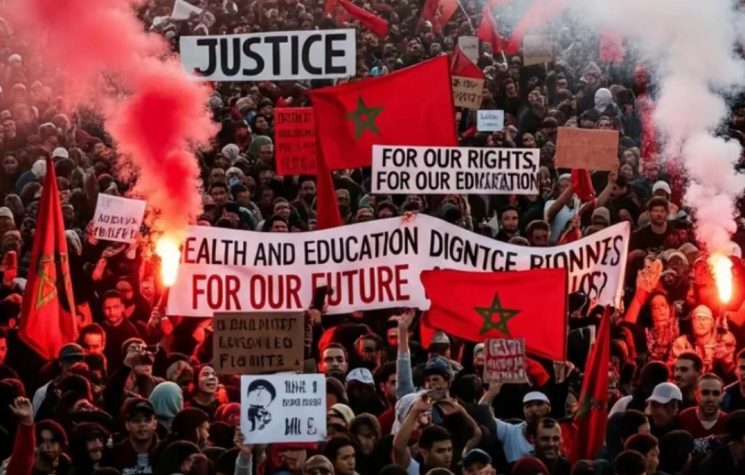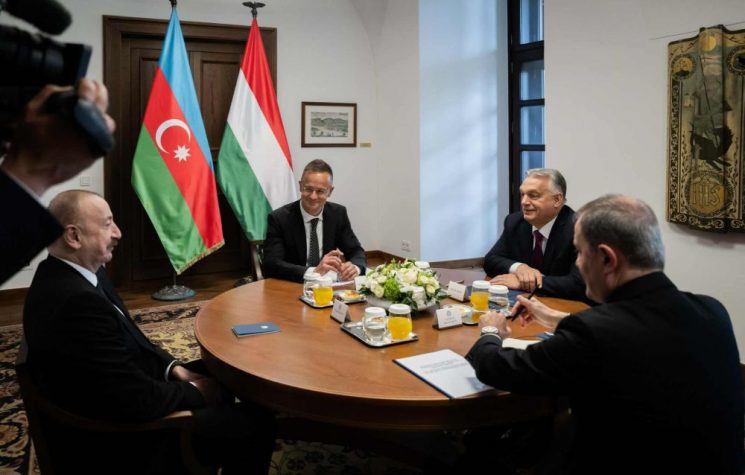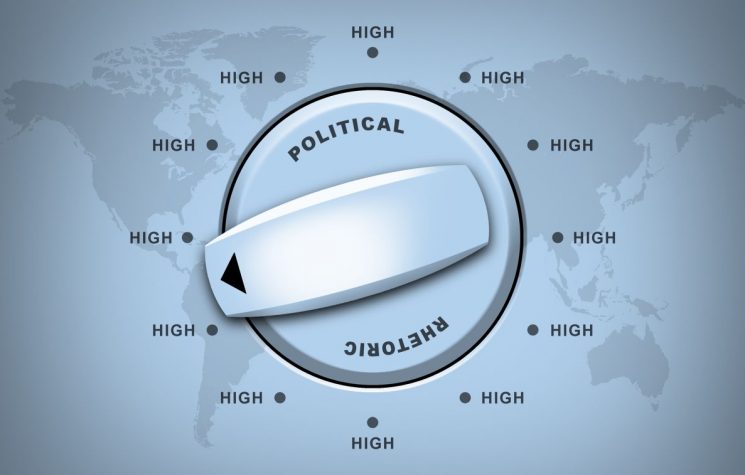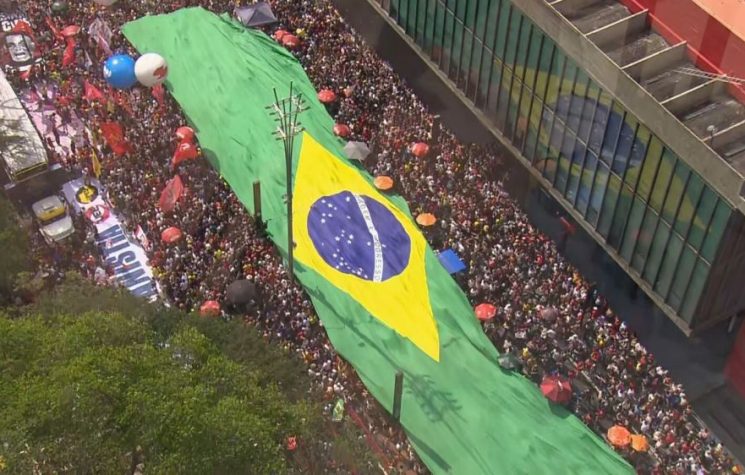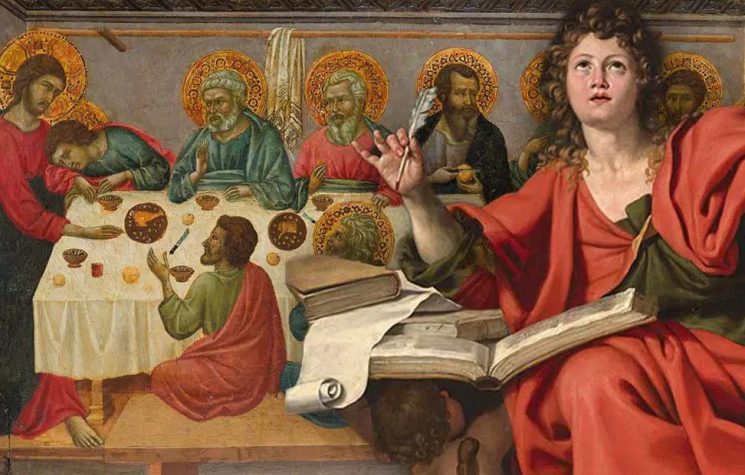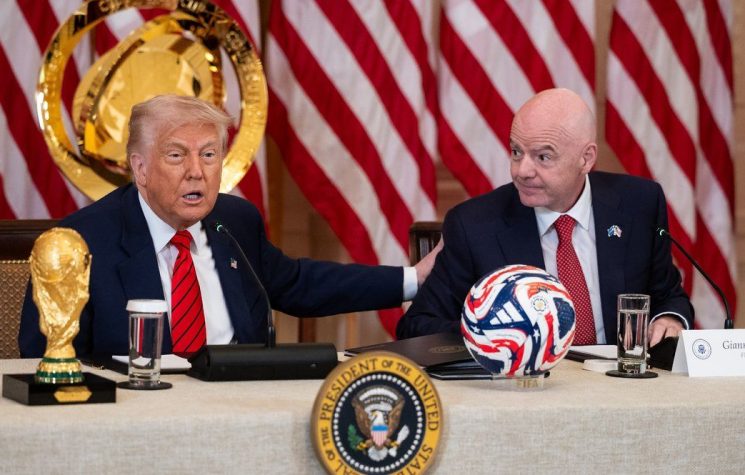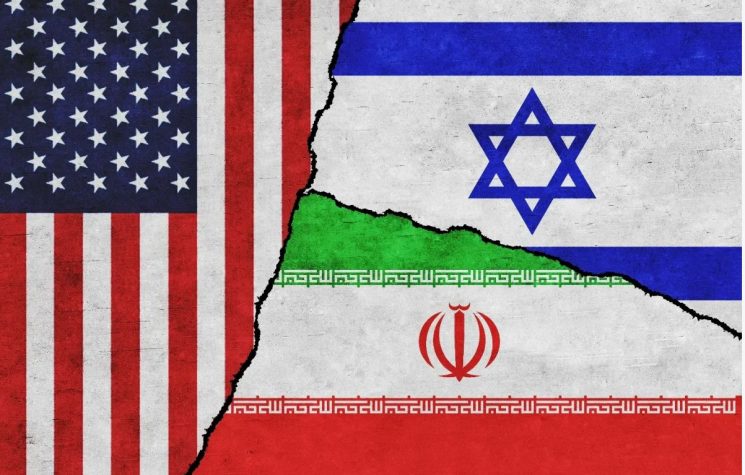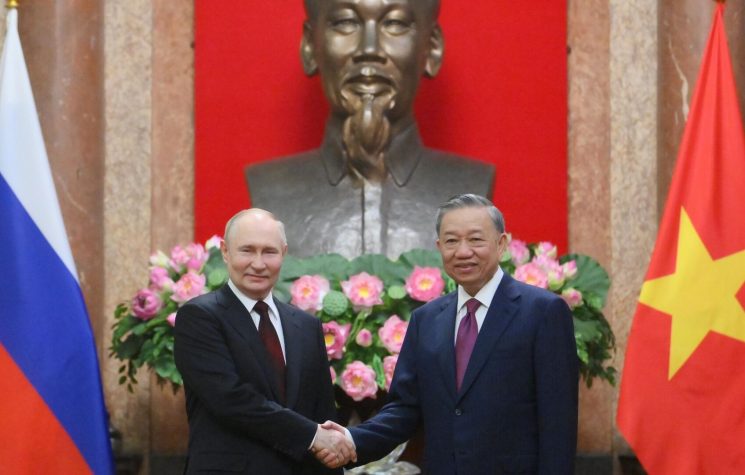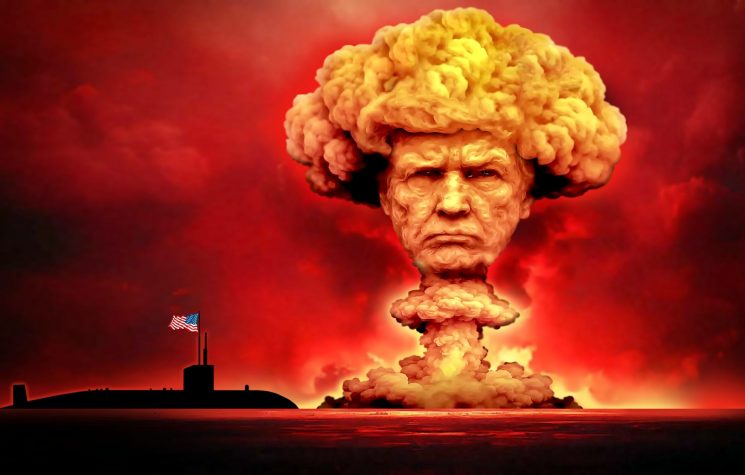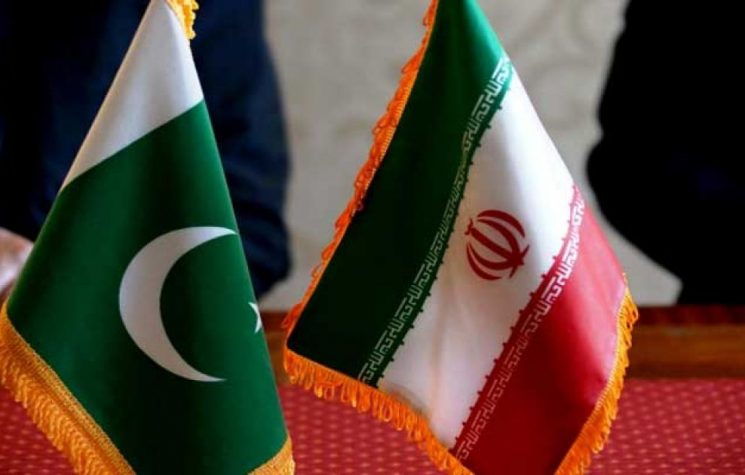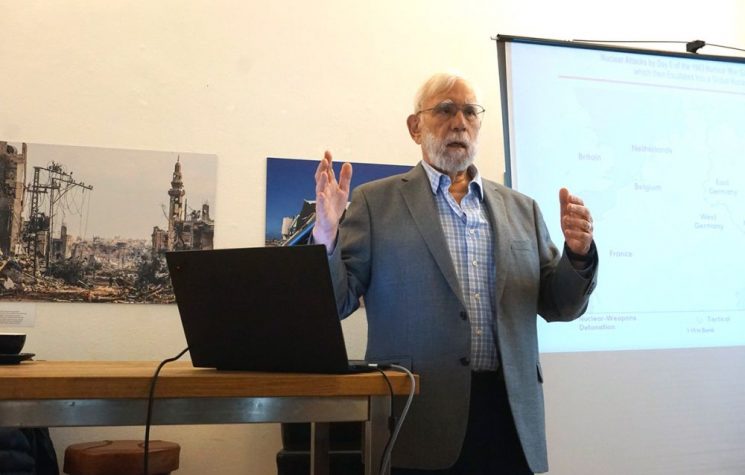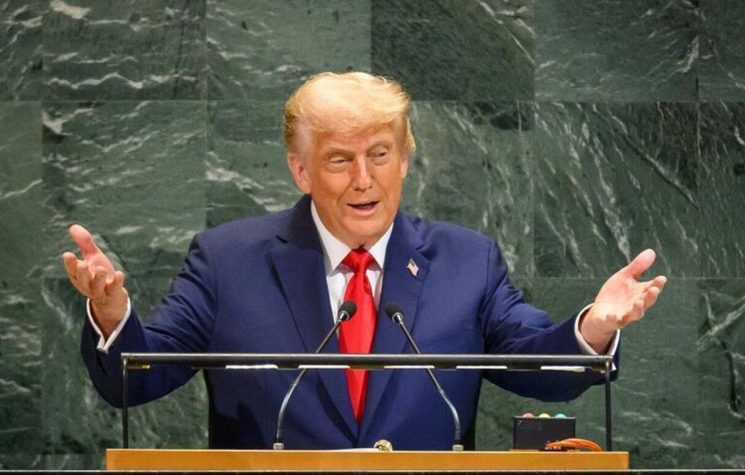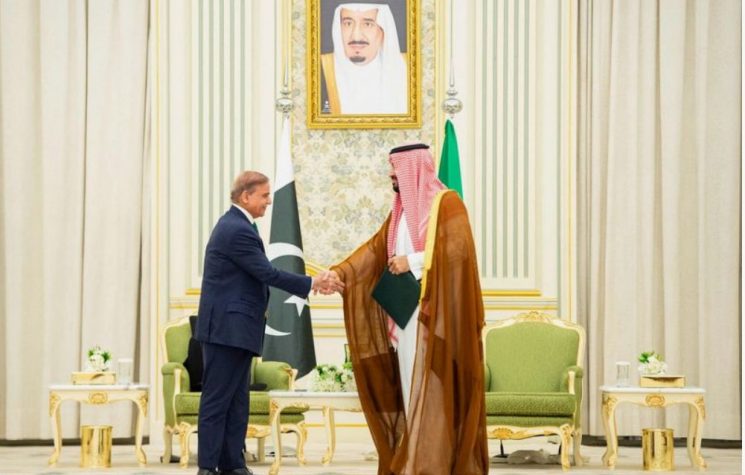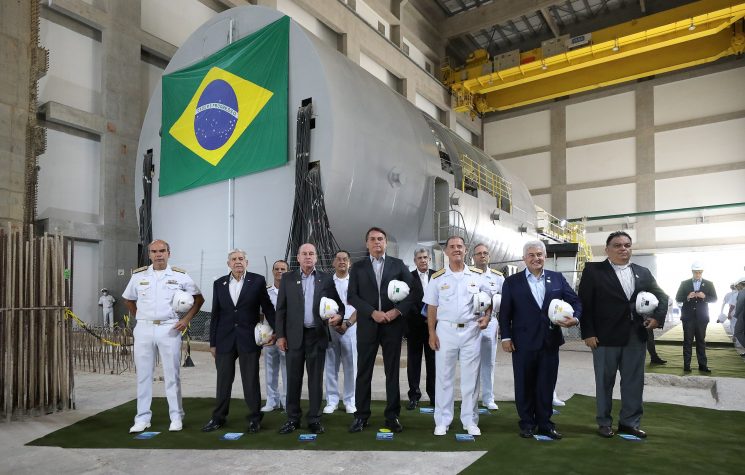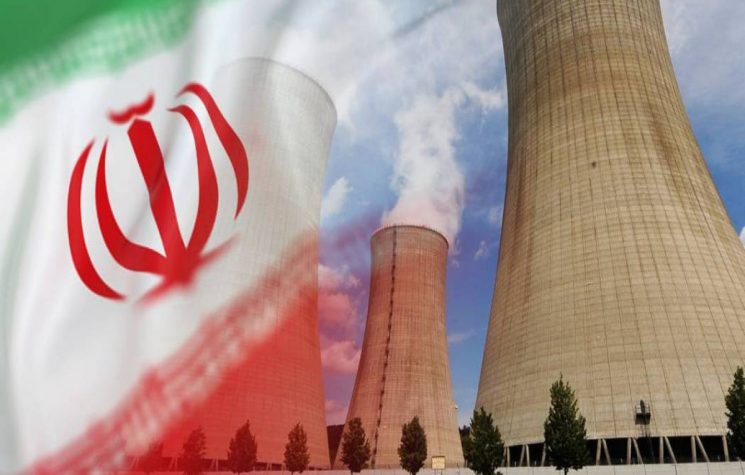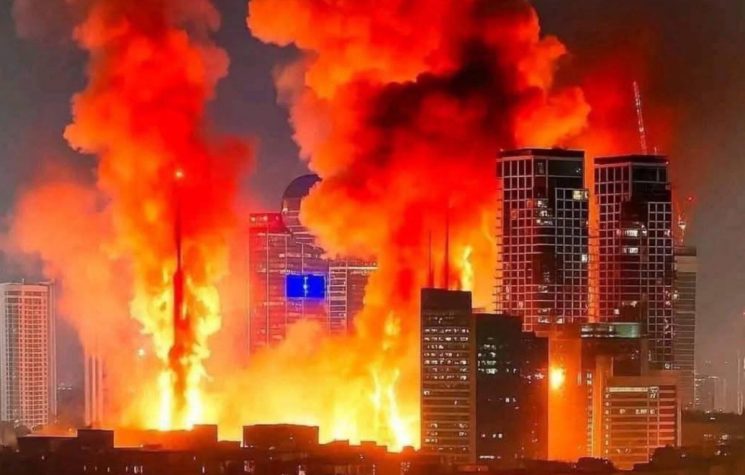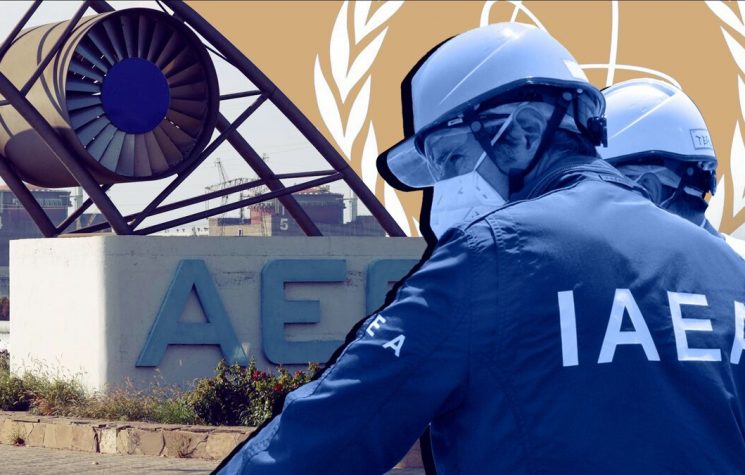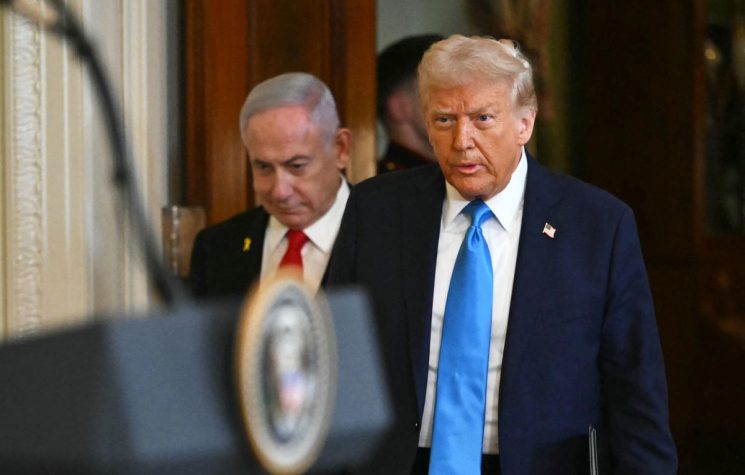This is Part 3 of the series “Follow the Trail of Blood and Oil”. Part 1 is a historical overview of Iran’s long struggle with Britain’s control over Iranian oil and the SIS-CIA overthrow of Iran’s Nationalist leader Mosaddegh in 1953. Part 2 covers the period of the Shah’s battle with the Seven Sisters, the 1979 Revolution and the Carter Administration’s reaction, which was to have immense economic consequences internationally, as a response to the hostage crisis.
In this article it will be discussed why, contrary to what we are being told, Iran’s fight for the right to develop nuclear energy will create stability and prosperity in the Middle East rather than an “arc of crisis” scenario.
From Arc of Crisis to Corridors of Development
Akbar Hashemi Rafsanjani became President of Iran on August 16th 1989 and served two terms (1989-1997). Rafsanjani, who is considered one of the Founding Fathers of the Islamic Republic, began the effort to rebuild the country’s basic infrastructure, after the ravages of the Iran-Iraq War and launched a series of infrastructure projects not only domestically but in cooperation with neighbouring countries. Following the dissolution of the Soviet Union in 1991, Rafsanjani moved to establish diplomatic relations with the newly independent Central Asian Republics, forging economic cooperation agreements based on building transportation infrastructure.
The major breakthrough in establishing this network came in May 1996 (after a 4 year construction) with the opening of the Mashhad-Sarakhs-Tajan railway, which provided the missing link in a network connecting landlocked Central Asian Republics to world markets, through Iran’s Persian Gulf ports.
At the historical launching of the railway, Rafsanjani was quoted as saying the expansion of communications, roads and railway networks, and hence access to world markets can “enhance amity, confidence and trust among governments and lead to mutual understanding and greater solidarity…The recent global developments demonstrate the world is moving toward greater regional cooperation, and regionally coordinated economic growth and development will consolidate peace and stability and pave the way for enhancement of international relations.”
In addition, at the end of Dec 1997, a 125 mile pipeline between Turkmenistan and northeast Iran was opened, gaining access to one of the largest untapped energy reserves in the world, the Caspian Sea Basin, designed to carry 12 billion cubic feet of natural gas a year.
Rafsanjani was fully aware of the Arc of Crisis prophecy that the U.S. was trying to convince the international community of, that basically, the Middle East was full of savages and would become a hot-bed for Soviet terrorism if left alone. It was also understood that Iran’s geographic location was the linchpin in determining not only Middle East geopolitics, but Eurasian relations.
To counteract this “prophecy”, which was in fact a “vision” for the Middle East, Rafsanjani understood that economic development and cooperation with Iran’s neighbours was key to avoiding such chaos.
In 1996, Rafsanjani founded the Executives of Construction of Iran Party, along with 16 members of cabinet, dedicated to Iran’s increasing participation in world markets and industrialization with emphasis on progress and development. The party’s view is that economic freedom is linked to cultural and political freedom.
Rafsanjani publicly supported Khatami as the next president- a highly influential and significant move.
Khatami’s Call for a “Dialogue Amongst Civilizations”
Mohammad Khatami became President of Iran on the 3rd August 1997 and served two terms (1997-2005). He was elected by an overwhelming majority (69% in 1997 and 77.9% in 2001) with a record voter turnout and was extremely popular amongst women and young voters. There was much optimism that Khatami’s presidency would not only bring further economic advances for Iran, but also that Iran’s international relations could begin to mend with the West and end Iran’s economic isolation.
It was Khatami who would first propose the beautiful concept “Dialogue Amongst Civilizations” and delivered this proposal at the UN General Assembly in September 1998 with the challenge that the first year of the millennium be dedicated to this great theme. It was endorsed by the UN.
You may be inclined to think such a concept fanciful, but Khatami was actually proposing a policy that was in direct opposition to the “crisis of Islam” and “clash of civilizations” geopolitical theories of Bernard Lewis and Samuel P. Huntington. Khatemi understood that to counteract the attempt to destabilise relations between nations, one would have to focus on the common principles among different civilizations, i.e. to identify a nation’s greatest historical and cultural achievements and build upon these shared heritages.
This is the backbone to what China has adopted as their diplomatic philosophy, which they call win-win cooperation and which has led to the creation of the BRI infrastructure projects, which are based on the recognition that only through economic development can nations attain sustainable peace. Italy would be the first in Europe to sign onto the BRI.
In 1999 Khatami would be the first Iranian president, since the 1979 Revolution, to make an official visit to Europe. Italy was the first stop, where Khatami had a long meeting with Pope John Paul II and gave an inspiringly optimistic address to students at the University of Florence.
Khatami stated his reason for choosing to visit Italy first was that they shared in common renaissance heritages (the Italian and Islamic Renaissances). Since the two nations had made significant contributions to contemporary civilization, an immense potential existed for a strategic relationship. It was also significant that Italy had never had a colonial presence in the Middle East. During his visit, Khatami had suggested that Italy could function as the “bridge between Islam and Christianity”.
Khatami further elaborated on the concept of a “bridge between Islam and Christianity” in an interview published by La Republica:
“To delve into past history without looking at the future can only be an academic diversion. To help human societies and improve the condition of the world, it is necessary to consider the present state of relations between Asian, in particular Muslim, countries, and Europe…Why do we say, in particular, Muslim? Because Islam is Europe’s next door neighbor; unlike individuals, nations are not free to choose or change neighbors. Therefore, apart from moral, cultural, and human reasons, out of historical and geographical necessity, Islam and Europe have no choice but to gain a better and more accurate understanding of each other, and thus proceed to improve their political, economic, and cultural relations. Our future cannot be separated from each other, because it is impossible to separate our past.”
In June 2000, Khatami made a state visit to China with a 170 member delegation. In a lecture delivered at Beijing University Khatami stated:
“Even if one were to rely solely on historical documents we can still demonstrate the existence of uninterrupted historical links between China and Iran as early as the third century BC. [The historic Silk Road was the vehicle of cultural exchange where] we can observe a striking spectrum of cultural and spiritual interchanges involving religions, customs, thoughts, literature and ethics, which on the whole, added to the vitality and vivacity of eastern culture and thought…[and that] the Chinese outlook has been instrumental in opening up the way to the fruitful and constructive historical discourses throughout the ages, due to its emphasis on the intellectual over the political, in an attempt to epitomize wisdom, temperance and parsimony…Emphasis on our long standing close historical ties and dialogue among the great Asian civilizations, is a valuable instrument for the regenerating of thought, culture, language, and learning…in Asian civilizations, culture has always been the core of the economic and political process…[and] therefore, we are compelled to give a more serious thought to the revival of our cultures…”
Khatami concluded with “The future belongs to the cultured, wise, courageous and industrious nations.”
Dr. Strangelove and the “Islamic Bomb”
The U.S. was not always so antagonistic to Iran’s right to sovereignty. In 1943, President Roosevelt created the Iran Declaration which was signed by both Stalin and Churchill at the Tehran Conference, effectively ending Iran’s occupation by foreign powers.
In 1957, following Eisenhower’s “Atoms for Peace” initiative, the U.S. and Iran signed the “Cooperation Concerning Civil Uses of Atoms” which led to the 1959 creation of the Tehran Nuclear Research Center. And in 1960, first generation Iranian scientists were trained at MIT. In 1967, the U.S. supplied Iran with a 5 megawatt research reactor and enriched uranium fuel!
The reason why the relationship went sour, as Washington incessantly repeats, is that Iran is no longer trustworthy after the hostage crisis debacle shortly after the 1979 Revolution. The U.S., confident on their high horse, has felt justified ever since to dictate to Iran how they should run their nation.
Funny that it is hardly ever mentioned in the same breath that the U.S. was directly involved in the illegal removal of Iran’s Prime Minister Mosaddegh in 1953 who had successfully nationalised Iran’s oil and purged the nation of its British imperialist infestation.
Iran had proceeded in accordance with international law and won the case for nationalising Iran’s oil at The Hague and UN Security Council, against the British who were claiming their company “rights” to Iran’s resources. When Britain humiliatingly lost both high profile cases, Britain and the U.S. proceeded to implement TPAJAX and illegally overthrew the constitutional government of Iran, removing Mosaddegh as Prime Minister and installing an abiding puppet in his place.
Despite this, the U.S. acts as if it were justified in its incredibly hostile 40 year foreign policy towards Iran, largely over a hostage crisis (to which all hostages were safely returned home), and which was likely purposefully provoked by the U.S. as a pretext to sabotaging the European Monetary System (see my paper on this).
If Iran can forgive what the U.S. did to throw their country into disarray and keep their beloved leader Mosaddegh locked away as a political prisoner for the rest of his life, who was even refused a proper burial (1), then the U.S. government is in no position to harbour such distrust and hatred over the distant past.
Although Iran is also incessantly accused of alleged terrorist activity, there is not one international court case to date that has actually provided evidence to follow through with such charges. What is standing in the way of this occurring if Iran’s crimes are apparently so immense and far reaching and are a matter of international security, as the U.S. government frequently protests?
These alleged terrorist accusations seem to be based in the same form of “reasoning” behind the incessant accusations that Iran is planning on building an “Islamic Bomb”. In 2007, under the fanatical neoconservative Dick Cheney (via operation Clean Break), the U.S. came very close to invading Iran on the pretext that Iran was actively working towards such a goal.
These threats occurred despite the Director of the International Atomic Energy Agency (IAEA), ElBaradei, insisting that Iran was cooperating with the IAEA demands in accordance with NPT standards and that there was no evidence to support that Iran was working on nuclear weapons. In fact, ElBaradei was so upset over Washington’s threats of war that he took to the press daily to emphasise that Iran was cooperating fully and there was no evidence to justify an invasion.
However, it wouldn’t be until the release of the National Intelligence Estimate on Dec 3, 2007 that Cheney’s fantasy was finally dashed against the rocks. Within the NIE report, which was produced by American intelligence agencies, it was made crystal clear that Iran in fact had no military nuclear program since at least 2003 but possibly even further back. It was also no secret that the only reason why the report was made public was because members of the American intelligence community made it known that they were willing to go to the press about it, even if it meant ending up in prison.
Incredibly, Bush’s response to the press over this news was “Iran was dangerous, Iran is dangerous, and Iran will continue to be dangerous…”
Looking past the absurdity of Bush’s statement that Iran is dangerous, only 5 years after the illegal invasion of Iraq, justified by cooked British Intelligence, and the very real attempt to invade Iran in turn over fabricated accusations, the issue is in fact nothing to do with what Washington is claiming is their problem with Iran.
Atoms for Peace or Nuclear Apartheid?
The real “problem” with Iran is that it has become a great thorn in the “arc of crisis” game-plan. Despite Iran once being flooded with MI6, CIA and Israeli Mossad operatives, the Iranians have been largely successful in purging their nation of this infestation. Iran is thus refusing to be the west’s geopolitical linchpin. The more autonomous and prosperous Iran becomes, the greater the thorn.
The assassination of Gen. Maj. Soleimani in Jan 2020, was meant to be nothing less than a blatant provocation, as Bolton giddily tweeted, to cause Iran to take a misstep that would have justified a U.S. invasion and allowed for a reboot of the “arc of crisis”, flooding the country with actual terrorist groups, following the Iraq and Libyan models.
The real “threat” of Iran was expressed clearly when then President Bush Jr. visited the Middle East in Jan 2008 in an attempt to organise Arab states to offer their territory for U.S. military aggression against Iran. What he received as a response whether in Kuwait, Bahrain, UAE or Saudi Arabia was a resounding no.
The Al-Riyadh newspaper, which represents the views of the Saudi government, went so far as to state “We refuse to be used to launch wars or tensions with Iran…If the president [of the U.S.] wants to obtain the solidarity of all the Arabs…he must focus, rationally, on the most important issue which is the question of peace.”
Overlapping Bush’s visit, the Foreign Minister of Iraq joined with the Iranian Foreign Minister at a Tehran press conference to announce: “My country knows who is our friend and who is our enemy, and Iran is our friend.”
It is clear that despite the attempts to bring these nations to each other’s throats, the jig is up, and the tyrannical presence of the U.S. military in the Middle East is only going to unite these countries further. There will be no T.E. Lawrence organising of a Bedouin tribe this time around.
It is understood that if Iran were permitted to enter the world markets unhindered and to develop nuclear energy to sufficiently provide for its people, then Iran would become one of the top countries in the world. And as their Arab neighbours recognise, this would bring not only wealth and prosperity to their nations in turn, but the very much desired peace and security.
Iran as an economic powerhouse would also certainly align itself with Russia and China, as it has already begun, due to their common philosophy oriented in a multipolar governance frame emphasised by a win-win idea of economic cooperation. This alliance would naturally draw India, Japan and notably western Europe into its economic framework like the gravitational pull of a sun, and would result in the termination of the NATO-U.S. military industrial complex by ending the divide between east and west politics.
The fight for nuclear energy has always been about the fight for the right to develop one’s nation. And economic development of regions, such as the Middle East, is key to achieving sustainable peace. The reason why most countries are not “granted” this right to use nuclear power is because they are meant to remain as “serf” countries under a unipolar world order. Additionally, amongst the “privileged” countries who have been given the green light to possess uranium enrichment facilities, they are being told that they now need to shut down these nuclear capabilities under a Green New Deal.
This unipolar outlook was made evident by the Bush Administration’s attempt to assert guidelines that no country should be allowed to enrich uranium even to the low levels required for fuel for nuclear electric power plants, unless it is already in the U.S. dominated “Nuclear Suppliers Group”. All other nations would only be permitted to purchase power plant fuel from these “supplier” countries…with political conditions of course.
Everyone knows that oil revenues are not reliable for financing economic growth and Venezuela is a stark example of this. By limiting countries in the Middle East to oil as the main revenue, an incredibly volatile economic situation for the entire region is created, in addition to a complete subservience to “oil geopolitics”. Every nation has the right to defend itself against economic warfare by diversifying and stabilising its economy, and nuclear energy is absolutely key.
In British-based financial oligarchism, which is what runs the City of London (the financial center of the world for over 400 years to this day), the essential policy outlook which lurks behind the international oil cartels, is that who controls the oil, gas, strategic minerals, and food production will ultimately control the world, after the mass of paper values of a dying financial system have been swept away.








